Published 06/06/2019
Duncan Hannah was born in Minneapolis in 1952. He attended Bard College from 1971 to 1973 and Parsons School of Design from 1973 to 1975. Best known for his depictions of idyllic landscapes culled from adventure stories and classic films, his painterly realist style and anachronistic subjects are reminiscent of Edward Hopper in that they seem to evoke specific memories, events or happenings in one's own life.
During the late 1970s, Hannah was involved in the underground No-Wave film and music scene of the time, though his paintings didn’t reflect this. The artist continues to live and work in New York, NY. His work is in numerous public and private collections, including the Metropolitan Museum of Art and the Minneapolis Art Institute.
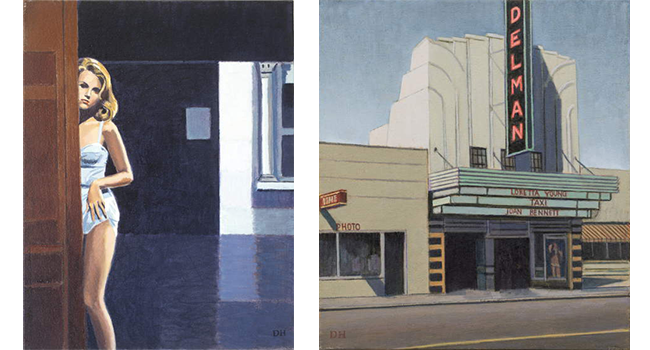
Private Collections / Duncan Hannah
1. What is your earliest memory of an artwork and who was it by?
It was probably N.C. Wyeth’s illustrations for Robert Louis Stevenson’s books, which are filled with dramatic mood. I remember thinking “someone actually made this from scratch!”. I still love them.
2. You grew up in conservative Minnesota which you have documented in your book, 'Twentieth Century Boy'. How did that effect your practice?
I felt very land-locked growing up in Minneapolis in the 50’s and 60’s, so the idea of a “world out there” was something I’ve never gotten over. It gave me a sense of “wanderlust”; seeing the world through movies, magazines and books was important to me and a good preparation for the time when I could travel to these places and meet some of the people I admired. Had I grown up in a big city I might have been more jaded, and less romantically inclined. I try to keep that sense of wonder in my work.
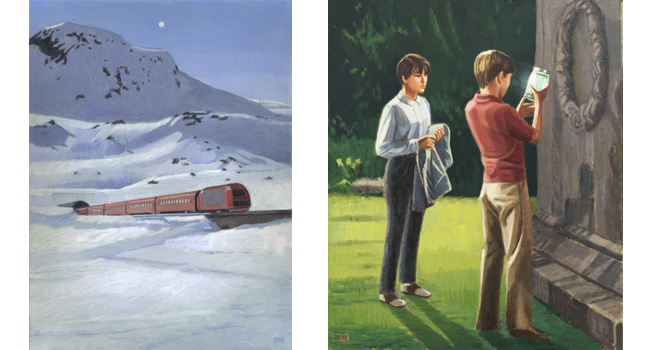
Private Collections / Duncan Hannah
3. What was it like studying at Parsons in New York in the 70s? Can you tell us about that time and the artists you met whilst you were there?
Parsons School of Design was a good launching pad for me, situated as it was in Greenwich Village. I had a heavy regime of drawing, painting and photography classes that developed my technical skills. Out and about in New York City I befriended David Hockney, Andy Warhol, Joe Brainard and Larry Rivers, who were all very supportive and helpful. Living in NYC was artistically challenging. No more a “big fish in a small pond”, this was the BIG pond, and I was continually exposed to the cutting edge of modern culture, as well as soaking up the rich history the city held. Parsons also provided me with a vocation. I could make a living as a free-lance illustrator while I kept working away to find my “voice” as a painter. This was also good training and lasted about five years. It made my personal work feel like a reward.
4. What is your favorite time of day to be in your studio?
After morning coffee and emailing, I get to work around 11, and usually work until 8. I prefer working with natural light. I find I might hit “the zone” after 2 or 3 hours of working, and then it’s hard to stop. That’s when the surprises start to appear. I love it when the painting begins to take on a life of its own, and I am following, rather than leading.
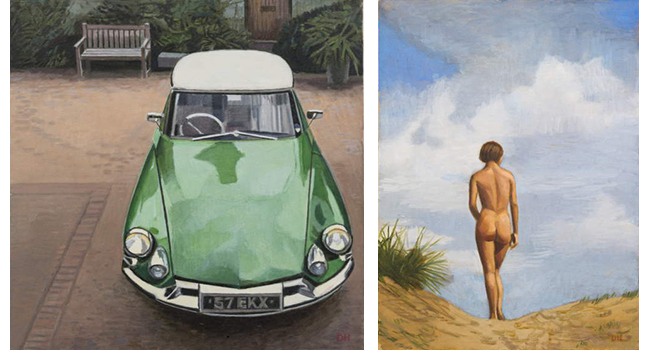
Private Collections / Duncan Hannah
5. You recently exhibited in the DRAW Art Fair in London's Saatchi Gallery. How did that come about?
I’m having a show in Paris presently (at Galerie Pixi on rue de Seine), and they took a booth at the London drawing fair, featuring my drawings and collages. I went over for it, and was pleased with it. There was everything: from talented new-comer Marie Jacotey to Lucian Freud and Jean Cocteau.
6. If you could pick 5 artists, dead or alive, to have dinner with who would they be and why?
I would choose dead artists since there’s always a possibility of having dinner with the living ones. Walter Sickert, John Singer Sargent, Henry Lamb, Modigliani and Willem de Kooning. I’ve read biographies of all these painters and been moved by their lives. I’ve collected many drawings by Henry Lamb which continue to inspire. He and Sargent would be the quietest at the dinner, Sickert the most amusing, and de Kooning and Modigliani would be the drunkest.
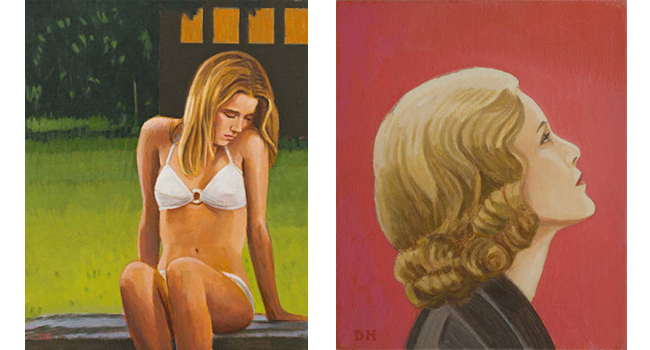
Private Collections / Duncan Hannah
7. What artist has had the greatest impact on you?
It changes all the time. I used to say Homer and Hopper, although I don’t look at them so much now. Fairfield Porter, Kurt Schwitters, R. B. Kitaj, Caspar David Friedrich, Wilhelm Hammershoi, Paul Gauguin, Edgar Degas, Edwin Dickinson, Gwen John, Euan Uglow, all these and so many more filter in and out of my consciousness.
8. European art cinema of the 1960s and '70s seems to be a recurrent theme you allude to in your work. Can you tell us what role films have played in the development of your style?
Being a semi-narrative painter, I found cinema to be a mother-lode of images for me to appropriate. In my 20s, I aspired to have the mood of English, French and Italian New-Wave films in my paintings, probably because I came of age with the new releases of Godard, Truffaut, Losey, Antonioni, Bertolucci, etc. Plus, I had crushes on countless actresses. All this desire is a good engine for a painter. “Follow what you love”, I thought. I appreciated the way films weren’t necessarily restricted to the period we live in, and could roam about through time. I wanted this too. I’ve always used “found” photography in my work, which gives me access to the whole world and everyone in it. Then it’s just a question of what I feel an affinity with, and what ingredients would make for a good painting.
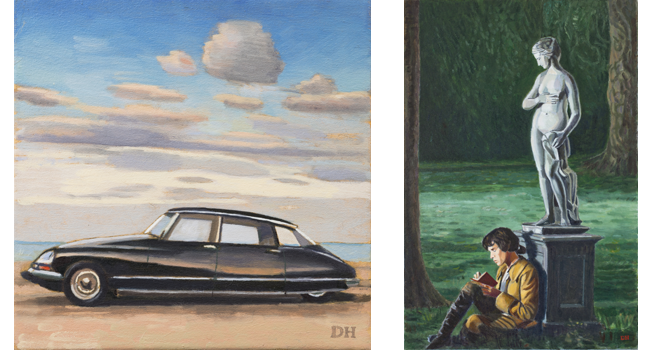
Private Collections / Duncan Hannah
Want more Duncan Hannah? Discover all of Duncan Hannah's work.
Bridgeman Images | Image. It’s Everything.
Are you looking to license art, culture and historical images? Bridgeman Images offers the highest resolution rights managed images for licensing. Please contact us for free image research or to learn more.


